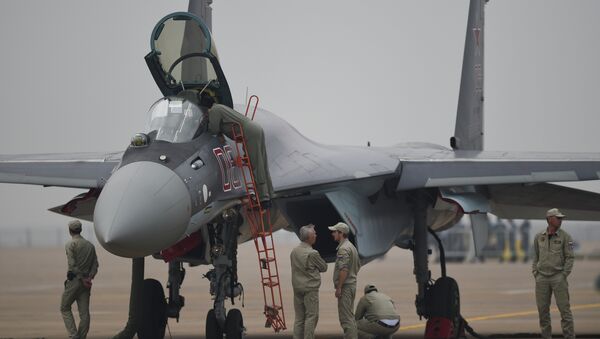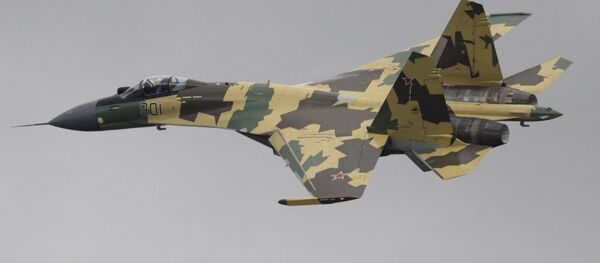The purchase of 24 Russian Su-35 in the amount of about $2 billion is the second largest transaction between the Russian and Chinese militaries, the Carnegie Moscow Center wrote.
It has been reported that the deliveries of the equipment could begin in 2016 and the transfer of the main parts of the equipment may take place in 2017-2018.
Looking at the advantages of the purchase of Russian aircraft by China, it seems that the Chinese are currently looking for additional ways of developing their combat aircraft capabilities.
As noted by the publication, between the two Chinese aircraft that are being developed at the moment, the J-20 and J-31, only the J-20 may be viewed as a fifth generation fighter.
As for J-20, which embodies the full potential of the Chinese aviation industry, the aircraft’s potential combat readiness is not very clear at the moment. This is supported by all the available capability of similar technologies available in the US and other countries.
The publication taking note of the Russian Su-35, however, mentioned that the new jet is a maximum advancement of the earlier fighter jet the Su-27.
Therefore, the acquisition of the Su-35 would allow the Chinese military to assess the progress and development of J-11. The acquisition may act as a guide showing the Russian approach to problem solving in stealth technology making it easier to further enhance the capabilities of the Chinese aviation.
It is probable that with the supply of 24 Su-35’s more contracts for units or various components for the new Chinese fighters, as well as technology transfer and R & D for the benefit of Chinese customers, may follow.
For Russia, the successful delivery of the fighter jets to China will further improve its position in foreign markets. It is expected that the next buyer of the Russian Su-35 may be Indonesia.




